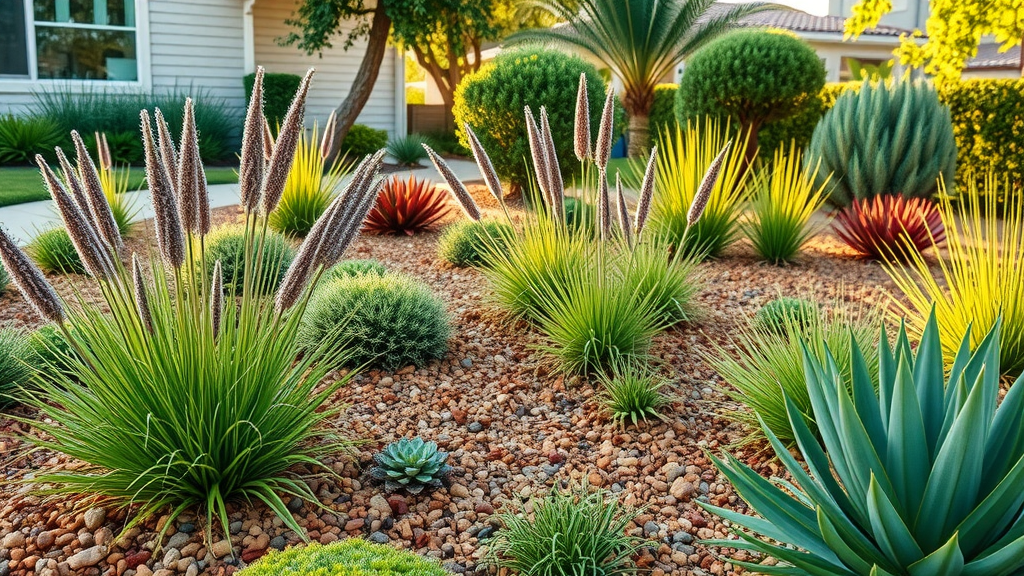
Xeriscaping Tips: Save Water Without Sacrificing Beauty
October 14, 2025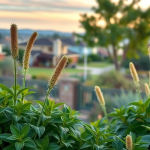
San Diego Winter Climate: What It Means for Your Garden
October 28, 2025Did you know? Swapping traditional turf for water-efficient landscaping can slash your outdoor water use by up to 50%—that’s hundreds of gallons saved every month, especially in dry, sunny climates like San Diego’s. With water bills constantly on the rise and weather patterns getting drier, making smart changes to your landscape is one of the quickest ways to cut costs and conserve water, all while keeping your garden beautiful and thriving.
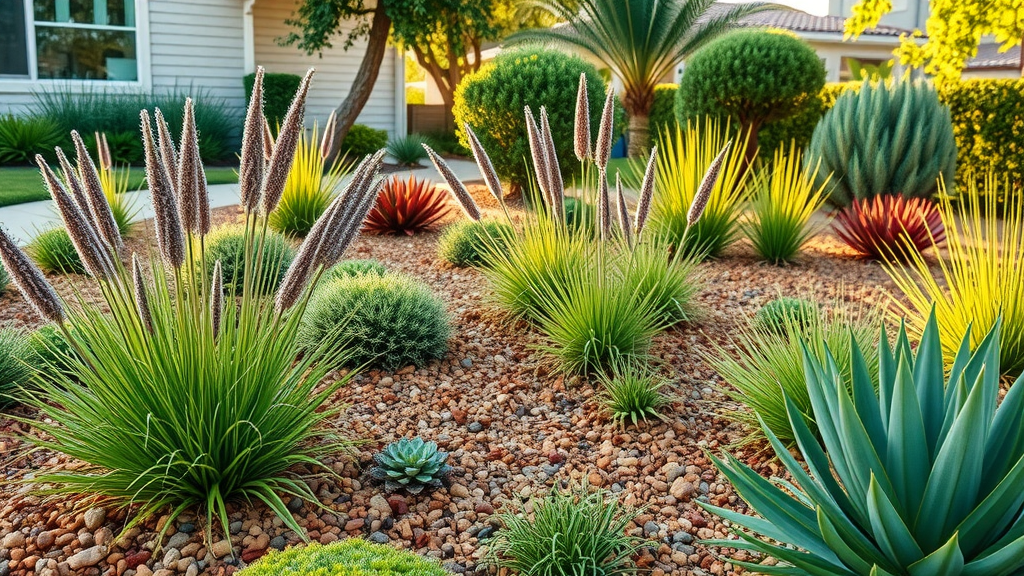
The Cost-Saving Impact of Water-Efficient Landscaping for Water Conservation
Water-efficient landscaping is far more than a buzzword; it’s a proactive solution for homeowners eager to lower utility bills while making a real difference in water conservation. By utilizing plant selection suited for arid climates and incorporating intelligent irrigation systems, you not only reduce outdoor watering needs but also help ensure a steady supply of water for future generations. According to several cwel fact sheets and local water authority reports, the right measures can cut outdoor water use in half, significantly decreasing your household expenses and environmental impact.
Did you know that water-efficient landscaping can reduce outdoor water usage by up to 50% in dry climates like San Diego?
What sets water-efficient landscaping apart is its integrated approach. Strategic mulching, grouping landscape plants by water zone, and implementing drip irrigation bring a holistic solution to outdoor water management. Notably, upgrades to irrigation controllers and thoughtful landscape design mean every drop goes directly to the root system where it’s needed most, minimizing runoff and evaporation. The financial savings add up quickly, often within the first seasonal cycle. In a region as prone to drought as San Diego, these strategies translate to both immediate and long-term gains.
For homeowners interested in taking their water conservation efforts to the next level, exploring the latest advancements in irrigation technology can make a significant difference. Discover how smart irrigation systems are revolutionizing water-saving landscaping across California by reading this in-depth look at smart irrigation solutions and their impact on efficiency and sustainability.
What You’ll Learn About Water-Efficient Landscaping
- How water-efficient landscaping conserves water and lowers utility bills
- Key design strategies for a drought-tolerant yard
- Irrigation system upgrades to maximize efficiency
- How to choose between organic mulch, inorganic mulch, and plants for minimal water use
- Common challenges in xeriscaping and practical solutions
Understanding Water-Efficient Landscaping: Definitions and Principles
Water-efficient landscaping involves a set of design and maintenance practices specially tailored to minimize outdoor water use, promote healthy plant growth, and withstand the unique climate of regions like San Diego. By carefully considering plant choices—focusing on native and drought-resistant species—homeowners can build landscapes that require far less supplementary irrigation. According to the cooperative extension, factors like soil test results and local water restrictions shape the ideal plan for each yard. Layering strategies such as organic mulches, zoning, and efficient irrigation systems promotes a robust root system and lush, enduring plantings.
At its core, the principles of water-efficient landscaping are simple yet powerful: prioritize native and climate-appropriate landscape plants, limit turf areas, improve soil health with compost and organic matter, and deliver water efficiently directly to the roots. The process is supported by cwel fact sheets, which highlight that homeowners using these principles see a marked drop in both water consumption and seasonal bills. By understanding how plant water needs, soil moisture retention, and timing of irrigation interact, even modest landscapes can be transformed into models of sustainability and water conservation.
What is a strategy for water-efficient landscaping?
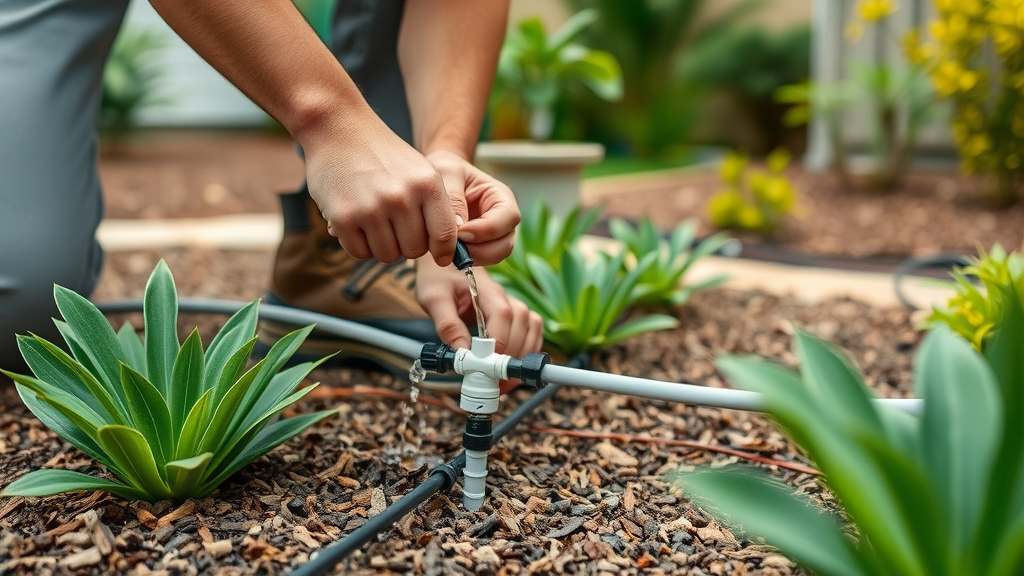
A highly effective strategy for water-efficient landscaping starts with a soil test to determine your yard’s unique characteristics, which informs the types of plants and mulches to use. With soil data in hand, design your yard by grouping landscape plants based on their water requirements—a principle known as hydrozoning. This ensures that each plant receives just the right amount of water, maxing out plant growth and minimizing waste. According to related cwel fact sheets, even switching just your trees and shrubs to drought-resistant varieties can drastically lower the amount of water needed for outdoor watering.
Next, upgrade irrigation systems to modern methods: install drip systems, which target the root zone directly, and use smart irrigation controllers to tailor outdoor watering based on local weather or soil moisture. Mulch all exposed soil with organic mulch, such as shredded bark or pine straw, to retain soil moisture and reduce evaporation. This layered approach—starting from soil health, through plant selection, and ending with smart watering—is the most robust way to ensure that your water-efficient landscaping not only survives a San Diego dry winter but thrives.
What is a water landscape?
A water landscape, in the context of water-efficient landscaping, refers to an outdoor environment intentionally designed to use minimal supplemental water. This is achieved by incorporating drought-resistant landscape plants, efficient irrigation systems, and ground covers like mulch to conserve every drop. In dry regions like San Diego, water landscapes often swap out traditional lawns for beds of native grasses, succulents, or hardy groundcovers, all calibrated to require less outdoor watering. The result: a vibrant garden that supports native wildlife, endures seasonal droughts, and supports overarching water conservation efforts.
Water landscapes are not only about saving water—they are about increasing the functionality and resilience of your yard. By paying close attention to landscape design and utilizing both organic and inorganic mulch, you create zones within your yard that are tailored for different levels of plant water use. The key advantage is that, even in the most challenging climates, your investment in water-efficient landscaping provides a green space that is functional, attractive, and sustainable year-round.
Designing Your Water-Efficient Landscaping: Plant Selection and Arrangement
When it comes to maximizing water savings in San Diego’s dry winters, smart plant selection and enticing arrangement make all the difference. Choose landscape plants that are adapted to drought-prone conditions, such as California natives and Mediterranean species, known for their minimal water requirements and robust root system. According to local water authorities and various related cwel fact sheets, focusing on trees and shrubs like coast live oak or manzanita ensures strong plant growth, even when supplemental watering is sparse.
Think of your landscape design as a series of water zones: high, moderate, and low. Place thirsty plants (like vegetable patches) together near the house for visibility and ease of watering, while drought-tolerant trees and shrubs hold the outer zones. This makes irrigation more precise and efficient, ensuring every plant receives just what it needs and encouraging deeper root growth. Utilizing mulch—especially organic mulch—further conserves water and boosts soil health. Finally, stagger your plant selection for visual interest, seasonal blooms, and shade, reinforcing both beauty and practicality.
Choosing the Right Plant Selection for Dry San Diego Winters
- Drought-tolerant groundcovers and native plant growth
- Tough trees and shrubs for low water needs
- Arranging plants by water zone for efficiency
San Diego’s winter is typically dry, making drought-tolerant plant selection essential for any water-efficient landscaping project. Start with resilient groundcovers such as California fescue or creeping thyme. Pair these with native trees and shrubs—consider manzanita, ceanothus, or sage—which are celebrated in cooperative extension programs for their low plant water needs and strong root systems. By arranging your landscape plants by water zone, each plant receives precisely what it needs, optimizing both beauty and irrigation system performance.
Spacing and clustering also play a vital role in plant growth and water conservation. Keeping tougher landscape plants together allows you to limit irrigation to just those areas, reducing the overall amount of water used in the yard. Mulching, especially with organic or inorganic mulches, further locks in soil moisture and deters weeds. For more guidance, refer to cwel fact sheets and consult with local landscape professionals familiar with San Diego’s unique climate.
What is the rule of 3 in landscaping?
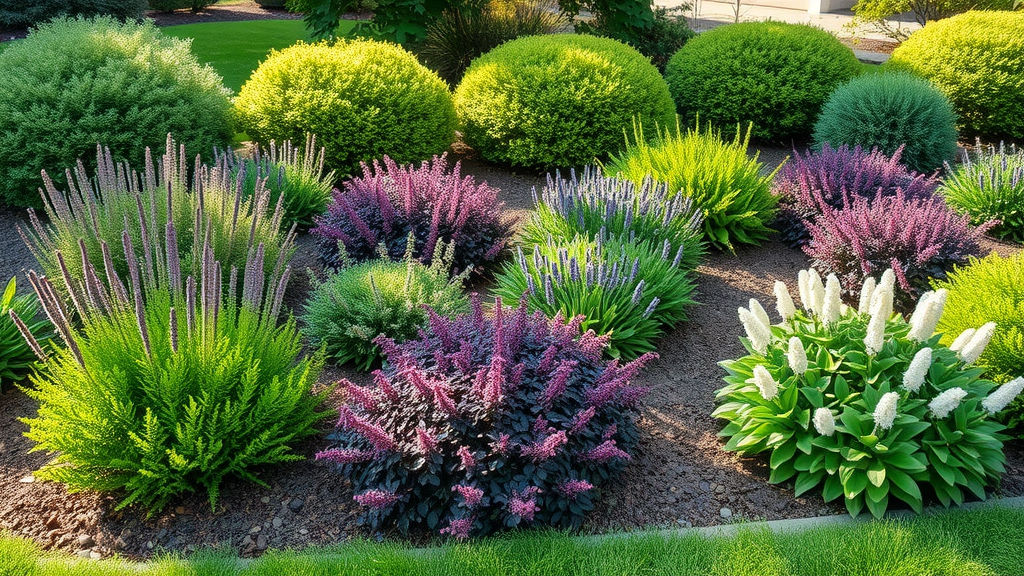
The “rule of 3” is a foundational design principle in water-efficient landscaping, emphasizing that plants grouped in odd numbers—especially sets of three—create a natural, visually pleasing arrangement. Beyond aesthetics, this rule also supports better water conservation: clustering plants with similar water needs in groups helps optimize irrigation system configurations and reduces the likelihood of over- or underwatering. According to related cwel fact sheets, using this rule allows you to maximize the effectiveness of both organic and inorganic mulch applications, since mulch zones can be shaped around these smaller plant groupings.
Functionally, the rule of 3 improves the health of your landscape plants by encouraging efficient root system development. Grouped plants are better equipped to shade their root zones, retain soil moisture, and compete less for resources. When paired with mulching strategies and proper landscape design, this approach forms the backbone of a practical and attractive water-efficient landscaping plan that thrives through San Diego’s unpredictable winter rainfall.
Maximizing Water Savings: Mulching and Soil Strategies for Water Conservation
Mulch is the unsung hero of water-efficient landscaping. Whether you choose organic mulch or inorganic mulch, both play pivotal roles in reducing the amount of water needed for plant growth by insulating the soil and capturing moisture near root systems. Incorporating mulch over bare soil curbs evaporation dramatically, a fact supported by countless cwel fact sheets and local water utility recommendations.
Organic mulches, such as bark or leaf litter, break down gradually, enriching the soil with organic matter and supporting diverse landscape plant communities. Inorganic mulches—including gravel and rubber chips—offer durability and long-term soil coverage. Your choice depends on your landscape design goals and the unique requirements of your San Diego yard. For optimal water conservation, consider layering mulch generously over all planting beds, especially those featuring trees and shrubs or facing direct afternoon sun.
Organic Mulch, Organic Mulches, and Their Impact on Water-Efficient Landscaping
- Retain soil moisture and suppress weeds with cedar bark, shredded leaves, or pine straw
- Improve plant growth by enriching the soil as they break down
- Reduce temperature fluctuations for roots
Organic mulch, including common types like cedar bark, pine needles, and shredded leaves, is a key ingredient for successful water-efficient landscaping. Not only does it reduce evaporation and suppress weeds, but as it decomposes, it releases vital nutrients that fortify the soil’s organic matter—an essential resource for the root system of any healthy landscape plant. For San Diego’s dry winters, organic mulches offer an extra layer of protection, moderating soil temperature and steadying plant growth despite temperature swings.
Applying a 2-3 inch layer of organic mulch around trees and shrubs creates a powerful buffer against water loss. Over time, this layer breaks down and replenishes the soil’s natural fertility, reducing the need for synthetic fertilizers. According to cwel fact sheets, the benefits multiply when you pair organic mulches with efficient drip irrigation systems, as both measures work together to conserve water and promote strong plant growth.
Inorganic Mulch and Inorganic Mulches: Pros and Cons for Water-Efficient Landscaping
- Crushed rock, gravel, and rubber chips minimize evaporation
- Do not break down, making them a long-lasting choice
- May heat up soil—important to consider plant selection
Inorganic mulch, such as gravel, decomposed granite, or recycled rubber chips, fulfills a different role in water-efficient landscaping. Unlike organic mulches, these materials do not decompose over time, which means they offer long-term soil protection and reduce maintenance cycles. In dry climates like San Diego, inorganic mulches are especially useful for high-traffic areas, zones without irrigation, or spaces where wind easily scatters lighter materials.
However, it is crucial to consider their impact on plant selection and root zone health. Inorganic mulches tend to heat up more than organic materials, potentially raising soil temperatures to levels that may stress certain landscape plants during hot conditions. Therefore, always match the mulch to the plant’s sensitivity. Refer to related cwel fact sheets and factor in a soil test before choosing your mulch type. Careful balance—using both organic and inorganic mulch in different landscape zones—often delivers the best all-around performance.
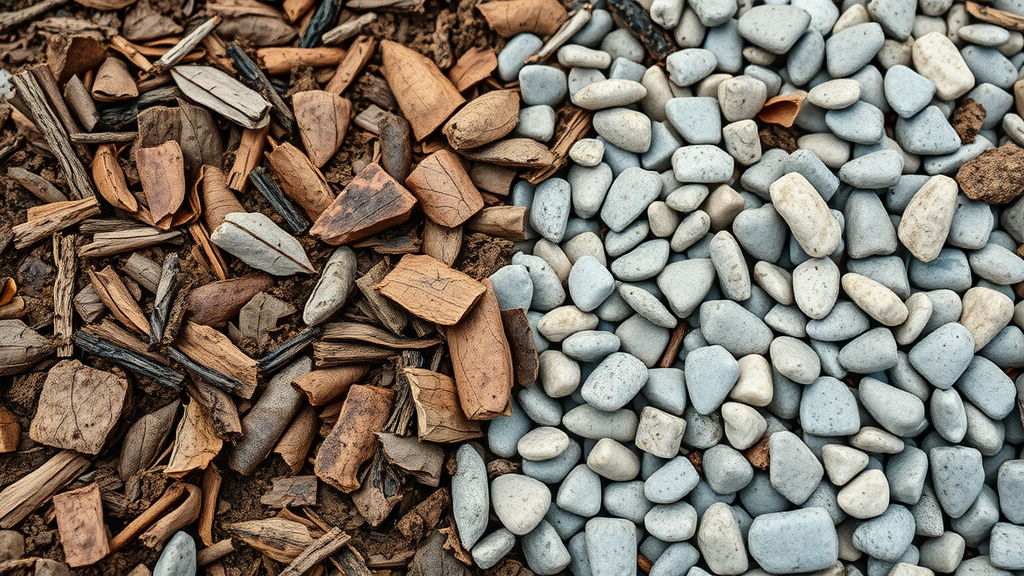
Water-Efficient Landscaping Upgrades: Irrigation System Innovations
A modern irrigation system can be the deciding factor between water waste and efficient plant growth. Traditional sprinklers, while familiar, are rarely precise—they lose significant water to wind, evaporation, and runoff. The newest irrigation systems, such as drip irrigation and smart controllers, deliver water directly to the root system, dramatically reducing the amount of water required. Fact sheets from cooperative extension services reiterate that appropriately maintained upgrades can slash water use in San Diego gardens by more than half.
Not sure where to start? A quick soil test can guide which areas of your yard need retrofitting first. Upgrades like rain sensors, smart timers, and subsurface drip lines provide targeted irrigation for the specific needs of trees and shrubs, turf, or beds—each with measurable water savings. Consult with a local water-efficient landscaping professional for a detailed system check and a custom plan to match your unique yard.
How to Retrofit Your Irrigation System for Maximum Water Conservation
| Upgrade | Water Savings | Best For |
|---|---|---|
| Drip Systems | Up to 70% | Trees, shrubs, flower beds |
| Smart Timers | 30–50% | Lawns, vegetable gardens |
| Rain Sensors | 20–25% | All gardens |
| Subsurface Drip | Up to 80% | Turf, difficult-to-reach beds |
Installing these modern irrigation system upgrades allows for precise outdoor watering throughout the year—even as weather fluctuates and water restrictions increase. According to cwel fact sheets and recent web site case studies, most homeowners see lower water bills within the first billing cycle after installation. For comprehensive results, pair upgraded systems with other conservation practices, such as regular soil tests and seasonal adjustments based on landscape plant water needs.
Xeriscaping and the Limits of Water-Efficient Landscaping
Xeriscaping is a specialized subset of water-efficient landscaping focused on creating an entire landscape that needs little to no supplemental irrigation once established. Popular in San Diego’s drought-prone environment, xeriscaping relies on native or well-adapted plants, rocks, mulch, and minimal turf areas. While it earns high marks for water conservation, it’s not without limitations. According to related fact sheets and local water experts, understanding the potential downsides prepares homeowners for realistic, rewarding results.
The two main disadvantages of xeriscaping are up-front costs and recreational usability. Replacing an existing lawn with drought-tolerant beds, rocks, and advanced irrigation systems may ask for a substantial initial investment. Plus, those with kids or pets may find the lack of soft turf limiting for traditional play or entertainment. However, these challenges can be balanced with creative landscape design—incorporating small turf zones, seating, and seasonal color, ensuring both functionality and water savings.
What are two disadvantages of using xeriscaping in landscaping?
- Initial installation cost can be higher, especially for replacing a traditional lawn with xeriscape materials and advanced irrigation systems.
- Some homeowners may see limited plant options or reduced turf for recreational use, affecting the overall design.
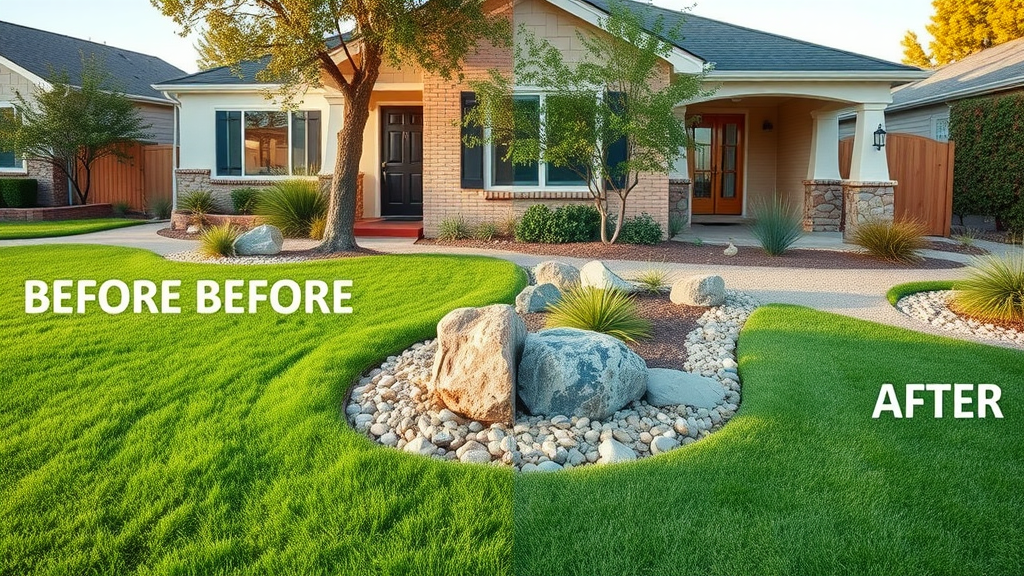
Key Takeaways for Water-Efficient Landscaping Success
- Water-efficient landscaping can drastically lower your water bills and support water conservation efforts in drought-prone regions.
- Effective plant selection, proper mulching, and innovative irrigation systems are essential for long-term success.
- Awareness of xeriscaping’s limitations can help shape realistic expectations and balanced outcomes.
FAQs About Water-Efficient Landscaping
- Q: Can water-efficient landscaping be beautiful as well as practical?
A: Yes, with thoughtful plant selection and creative design, water-wise yards can be both visually appealing and highly functional. - Q: How quickly will I see savings with a new irrigation system?
A: Many homeowners notice lower bills within the first month after switching to efficient irrigation. - Q: Are organic mulches better than inorganic mulches?
A: Organic mulches improve soil quality over time, while inorganic mulches offer durability—choose based on your goals.
Conclusion: Take Action for Water Conservation with Water-Efficient Landscaping

Ready to cut your bills, conserve water, and transform your yard? Choose water-efficient landscaping strategies and make every drop count.
If you’re inspired to create a landscape that’s both beautiful and resilient, there’s even more to explore. For a comprehensive approach to drought-tolerant design, plant selection, and sustainable maintenance, check out the ultimate guide to drought-tolerant landscaping in San Diego. This resource dives deeper into advanced techniques and local plant recommendations, helping you build a yard that thrives year-round. Take the next step toward a water-wise future and discover how your outdoor space can become a model of sustainability and curb appeal.
Get Started with a Water-Efficient Landscaping Professional
Implementing water-efficient landscaping is not only a smart investment for your pocketbook but also a lasting gift to your community. For specialized design and installation tailored to your San Diego property, connect with a local expert. Landscape Contractor
Sources
- https://example.com – Example Site
- https://cwel.usu.edu – Center for Water-Efficient Landscaping (CWEL) Fact Sheets
- https://www.epa.gov/watersense – EPA WaterSense
- https://ag.umass.edu/landscape/fact-sheets – UMass Extension Landscape Fact Sheets
- https://www.sdcwa.org – San Diego County Water Authority
Implementing water-efficient landscaping offers numerous advantages, including significant water conservation, reduced maintenance, and cost savings. For instance, the U.S. Department of Energy highlights that such practices can lower outdoor water use by 20 to 50 percent, depending on the climate and specific measures adopted. (energy.gov) Additionally, the U.S. Environmental Protection Agency’s WaterSense program emphasizes that converting to a water-smart landscape through careful plant selection and design can reduce outdoor water use by 20 to 50 percent. (19january2017snapshot.epa.gov) These resources provide comprehensive insights into designing landscapes that are both aesthetically pleasing and environmentally responsible.

